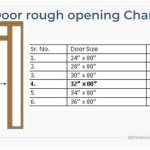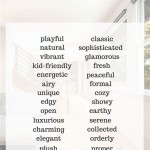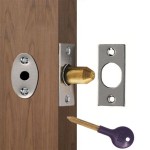Top Colors for Home Interiors
The colors we choose for our homes have a profound impact on our mood, energy levels, and overall well-being. A well-chosen color palette can make a space feel larger, brighter, and more inviting, while a poorly chosen one can create feelings of claustrophobia, anxiety, and even depression. Understanding the psychology of color and its application to interior design can help you create a home that is both beautiful and conducive to your desired atmosphere. This article explores some of the top colors for home interiors, providing insights into their psychological effects and practical applications.
Warm Colors: Creating a Welcoming and Energetic Atmosphere
Warm colors, such as reds, yellows, and oranges, are known for their stimulating and energizing qualities. These colors can evoke feelings of warmth, comfort, and happiness. They are often used in living rooms, dining rooms, and kitchens, where people gather and socialize. Red, for example, is a bold and powerful color that can stimulate appetite and conversation. Yellow, on the other hand, is associated with optimism, creativity, and intellectual stimulation. It can be used to brighten up a space and create a cheerful ambiance. Orange is a warm and inviting color that can promote energy and enthusiasm. It is often used in kitchens and playrooms. However, it is important to use warm colors sparingly. Too much of these colors can be overwhelming and even aggressive.
Cool Colors: Promoting Relaxation and Tranquility
Cool colors, such as blues, greens, and purples, are known for their calming and relaxing effects. These colors are often used in bedrooms, bathrooms, and home offices, where people seek to unwind and de-stress. Blue, for example, is often associated with serenity, peace, and calmness. It can help to create a sense of spaciousness and tranquility. Green is a natural and refreshing color that can promote feelings of well-being and relaxation. It is often used in bathrooms and bedrooms to create a spa-like atmosphere. Purple is a sophisticated and regal color that can evoke feelings of luxury and mystery. It is often used in accent walls and furniture to add a touch of elegance to a room. However, cool colors can also make a space feel cold and impersonal. Therefore, it is important to add some warmth with pops of color or natural elements.
Neutral Colors: Creating a Versatile and Timeless Background
Neutral colors, such as whites, grays, and beiges, are known for their versatility and timelessness. They create a blank canvas that can be easily accessorized with different colors and styles. White, for example, is a classic color that can make a space feel larger and brighter. Gray is a sophisticated color that can create a modern and minimalist look. Beige is a warm and inviting color that can create a cozy and comfortable atmosphere. Neutral colors are often used as the primary color for walls, floors, and furniture, while bolder colors are used for accent pieces and accessories. This allows for a flexible and adaptable design that can be easily updated over time.
Color Psychology in Interior Design
Color psychology is a fascinating field that explores the relationship between colors and human emotions. Different colors evoke different feelings and associations. For example, red is often associated with passion, energy, and excitement. Blue is often associated with calmness, peace, and tranquility. Green is often associated with nature, growth, and harmony. Understanding the psychological effects of colors can help you create a home that reflects your personality and promotes the desired mood. For example, if you want to create a relaxing and inviting atmosphere, you might choose to use cool colors like blues and greens. If you want to create an energetic and stimulating atmosphere, you might choose to use warm colors like reds and yellows.
Color Combinations and Accents
The way colors are combined can have a significant impact on the overall aesthetic of a space. Complementary colors, such as blue and orange, create a vibrant and dynamic look. Analogous colors, such as blue, green, and yellow, create a harmonious and soothing look. Monochromatic color schemes, which use different shades of the same color, can create a sophisticated and elegant look. Accents, such as throw pillows, area rugs, and artwork, can add pops of color and personality to a room. Experiment with different color combinations and accents to create a unique and personal style.

Top Colors For Home Interior Painting To Paint

Top 2025 Interior Paint Color Trends Best Ideas For Your Home

7 Best Trending Interior Paint Colors For Home Painting

Top 2025 Interior Paint Color Trends Best Ideas For Your Home

50 Best Living Room Paint Ideas Colors

Top 50 Besting Paint Colors At Sherwin Williams Setting For Four Interiors

The Most Trendy Home Decor Colors According To Top Interior Designers

50 Best Living Room Paint Ideas Colors

Top 2025 Interior Paint Color Trends Best Ideas For Your Home

The Top 8 Grey Wall Paint Colours For A Timeless Interior
Related Posts








